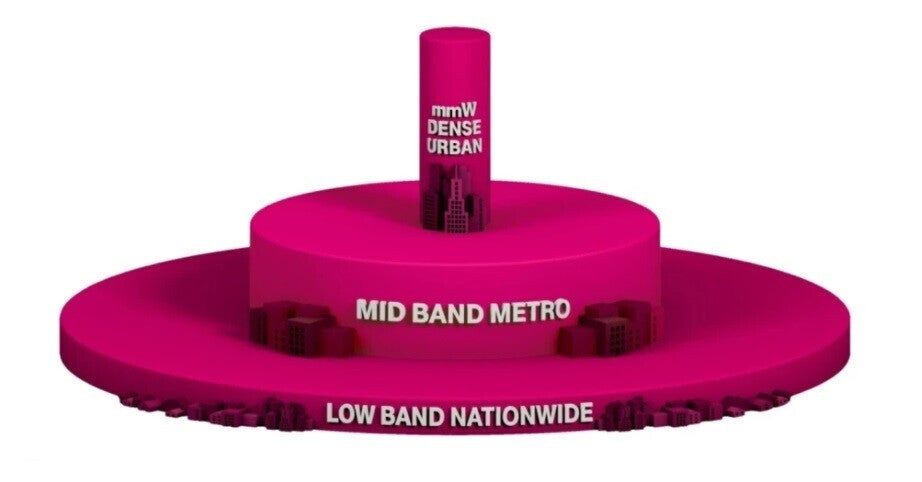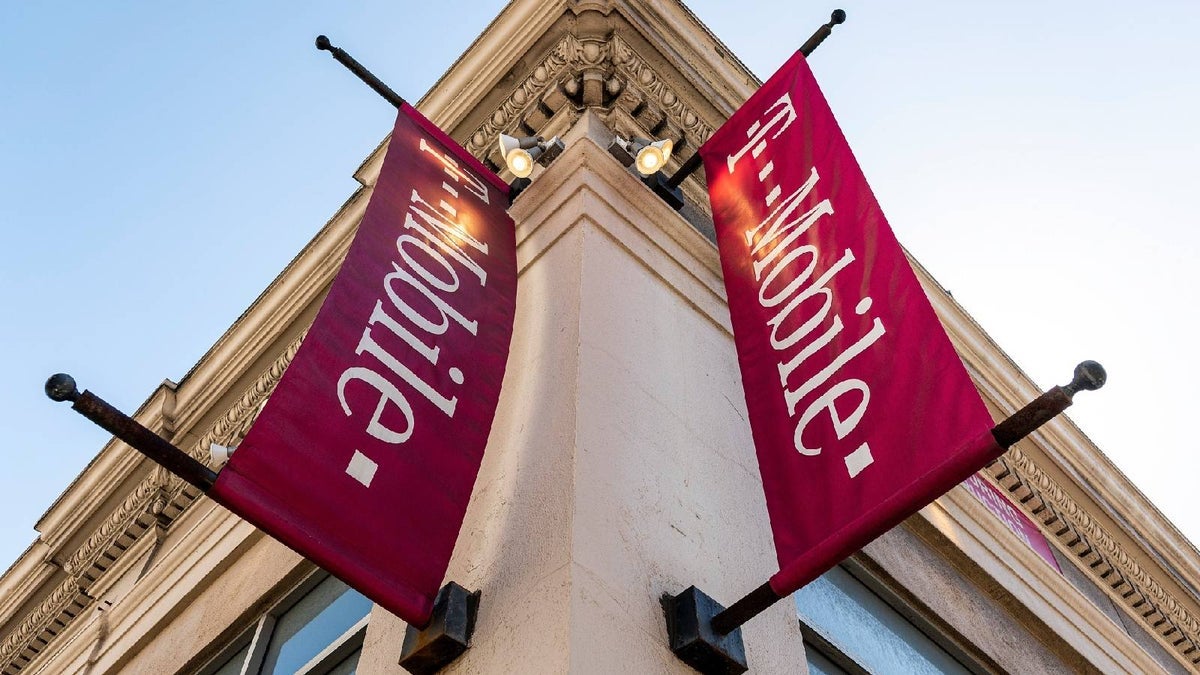Even before purchasing Sprint for $26 billion, T-Mobile made a huge purchase that helped it get ready to deliver 5G wireless to the American public. In 2017, the company spent $7.9 billion to buy 31MHz of low-band 600MHz from an FCC auction. The 600MHz low-band airwaves are the anchor for the carrier’s extended range nationwide 5G service. Because T-Mobile uses 600MHz spectrum for its low-band, it had planned to sell 13.5MHz of low-band 800MHz spectrum to Dish.

T-Mobile’s 5G spectrum layer cake|Image credit-T-Mobile
Discussing the 800MHz spectrum, T-Mobile CEO Mike Sievert says, “We have interested parties. We have nonbinding indications of interest. So stay tuned.” Not that the nation’s second-largest wireless provider is desperate, but with Sievert’s eyes constantly looking for the next big acquisition, a hefty cash deposit of nearly $3.6 billion goes a long way. After all, T-Mobile is awaiting regulatory approval for its $4.4 billion purchase of MVNO Mint Mobile.
Analysts at TD Cowen believe that T-Mobile rivals Verizon and AT&T will be involved in the auction although they are both reportedly struggling with their own finances. Additionally, an earlier report stated that Verizon and AT&T cannot acquire the 800MHz spectrum without prior approval from the U.S. government.
Low-band spectrum is typically used by carriers for their nationwide 5G networks because of the airwaves’ ability to travel long distances. However, low-band is only slightly faster than 4G LTE. Mid-band spectrum is considered the most desirable for 5G; while it can’t travel as far as low-band, it can still outdistance high-band mmWave signals. While mid-band might not be as fast as mmWave, it is much faster than low-band. T-Mobile acquired Sprint in 2020 for $26 billion to get its hands on the latter’s horde of 2.5GHz mid-band spectrum.
